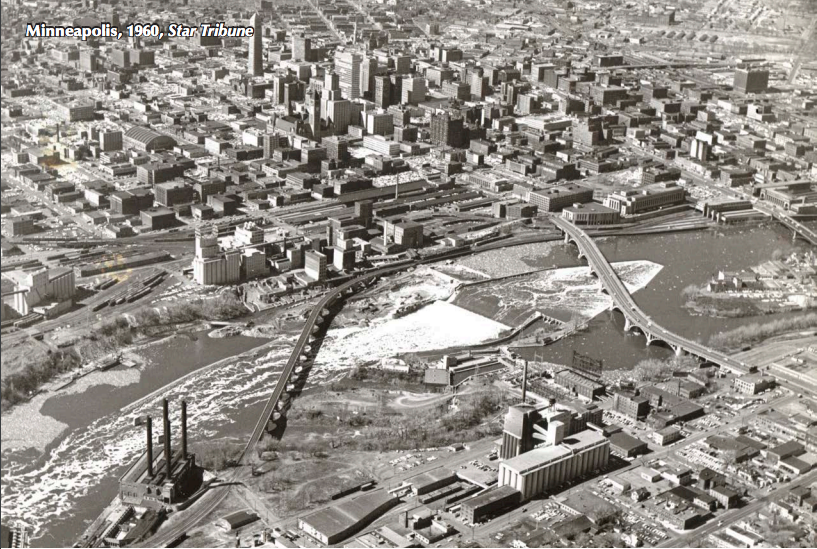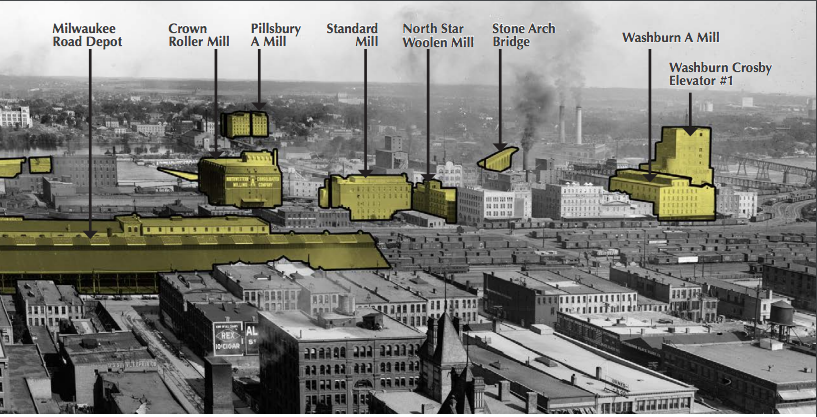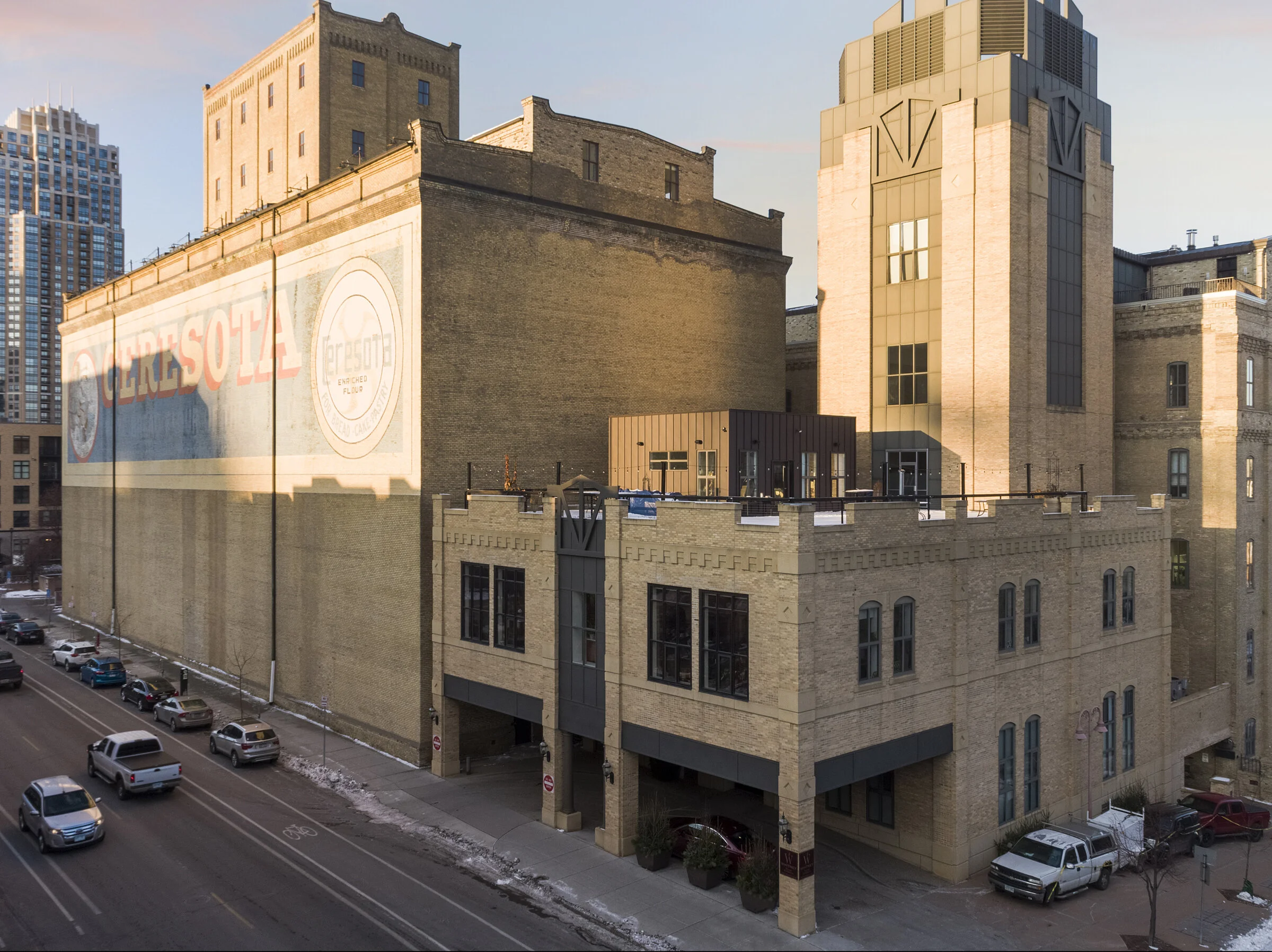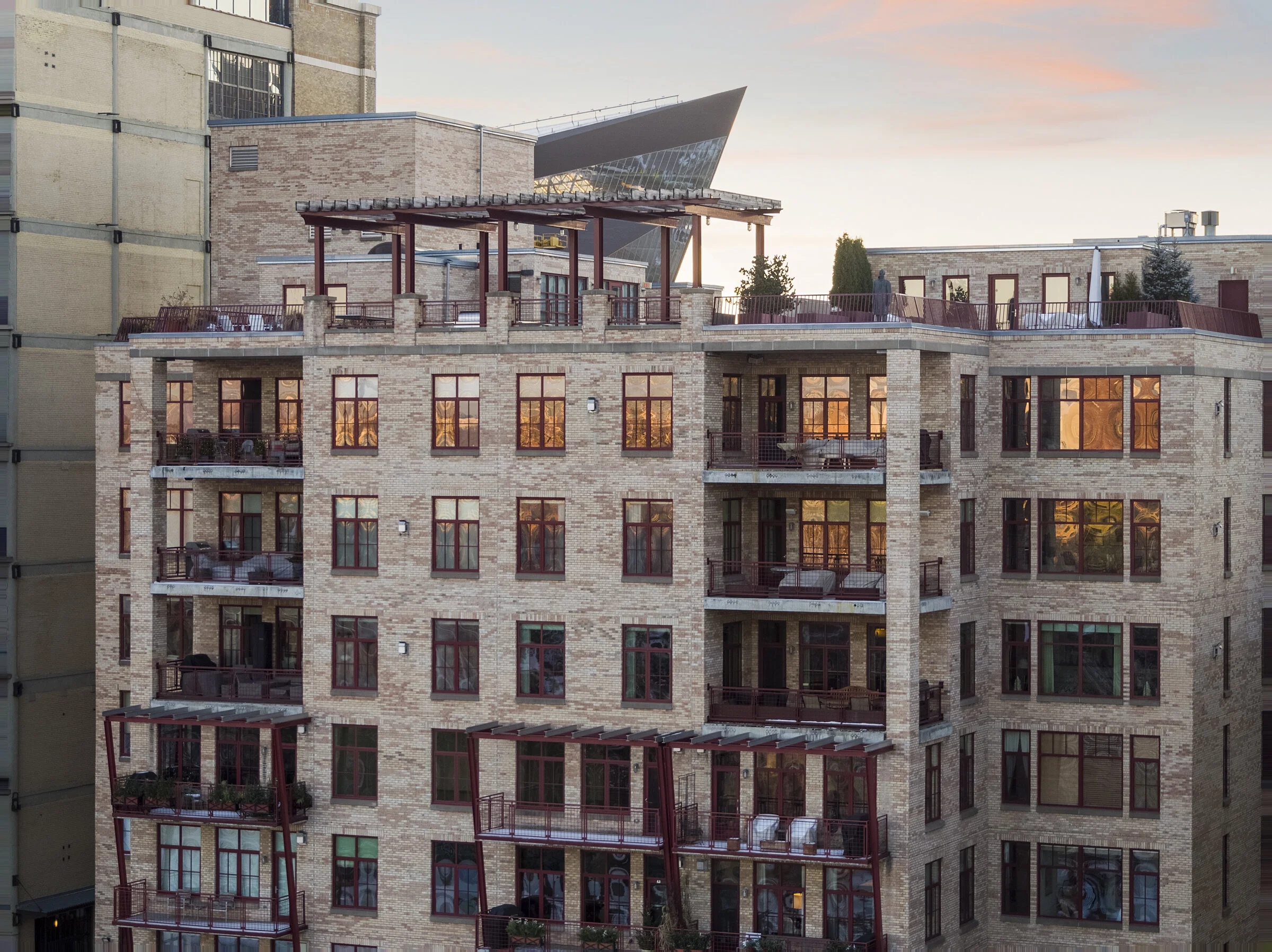Neighborhood Spotlight: Mill District
At the Cynthia Froid Group, we keep a close eye on our beloved downtown Minneapolis neighborhoods. In this blog post series, we will be highlighting neighborhoods across downtown and why we love where we live and work.
First Stop: Our HQ, the Mill District
Nestled along the river, the Mill District is one of the most Historic neighborhoods in Minneapolis. It’s most notable feat was supporting the booming milling industry in its peak, and is now home to some of the most interesting, unique buildings around.





History of the Mill District
The history of the area begins at the heart of the Industrial era in Minneapolis, St. Anthony falls. In the mid-1800s the falls were utilized as a source of power for the commercial flour milling and lumber industries. Notably, the Washburn A Mill was one of the most prominent buildings of its time. The city “grew up” around the mills. From a population of 13,000 in 1870, by 1890 the population had grown more than 12.5x in size in Minneapolis.
After a catastrophic explosion in 1878, the Washburn A Mill was not only back up and running just two years later, but it became the largest and most technologically advanced in the world. At its peak production, the mill ground enough flour to make 12 million loaves of bread a day, which was simply unheard of at the time. The boom of the milling industry allowed advertising, marketing, banking and other industries to grow and thrive in the city. This economic development surrounding the milling industry grown from Minneapolis subsequently allowed the city to become “the financial center of the Northwest.”
Over time, as the fertility of the Red River Valley crops declined, and as steam power began to rise, the distinct advantages Minneapolis once held were no longer. As the milling industry in Minneapolis began to decline after World War I in favor of mills closer to the Canadian wheat supply-chain, the mills, including Washburn A Mill and Pillsbury A Mill, subsequently shut down.
In addition to the Washburn and Pillsbury A Mills, the Humboldt and Standard Mill were integral parts of the milling fabric of Minneapolis. The Humboldt Mill was the first to be rebuilt after the explosion and was dubbed a model of the “most advanced system of New Process Milling” and architectural skill. In 1899, the mill was purchased by the Washburn-Crosby mill and was renamed the “E” Mill.
Standard Mill, known again as the Whitney Hotel, and presently as the Whitney Landmark Residences was a representation of a mid-sized flour mill. The mill was a relatively early example of an adaptive reuse of architecture in its development into the 96-room Whitney Hotel in 1983, and yet again when the building sold in the early 2000s, with plans to either renovate into a boutique hotel or move forward with a conversion into condos.
A side step into wool production - another of Minneapolis’ great contributions
Also within the Mill District stands the North Star Blanket Factory. Built in 1864, the North Star Blanket factory were the largest producers of woolen blankets for the soldiers in WWII with the majority of employees being women. By 1929 it became the largest producer of wool blankets in the country and employed over 270 people. Their production spun over 2,000,000 pounds of wool per year in its peak. Beyond its closure in 1949, its historical significance remains to this day.
•
Fast forward to the 2000s in the timeline, and the Mill District hits the map once again when the Guthrie Theater announced its move to the neighborhood. In June of 2006, the Guthrie opened its doors on S 2nd Street offering the neighborhood a healthy dose of development, entertainment, and creativity.
This spark of development continued as Gold Medal Park was opened in 2007. Suddenly, gone were the parking lots that once stretched across the area, and thus introduced another wave of real estate revitalization to the Mill District.
THE MILL DISTRICT TODAY
Since their abandonment, many of the flour and lumber mills have since been revitalized. The Washburn A Mill, after enduring a massive fire in 1991, this iconic landmark is now home to the Mill City Museum and one of the most notable boutique residential buildings in Minneapolis, the Washburn Lofts. The Pillsbury A Mill is now home to A Mill Artist lofts, located just across the river from the Mill District in St. Anthony Main.
Presently, both the Humboldt A Mill and Standard Mill along with Washburn A Mill and North Star Blanket Mill are now boutique residential properties that are home to some of the most unique, historic architectural features in our city.
In accompaniment with their revitalization, Washburn A Mill Complex, Pillsbury A Mill, and North Star Woolen Mill now reside on the National Register of Historic Places, a great symbol of their importance to the Mill District neighborhood and City.
•
Today, residents in the Mill District experience a more laid-back way of living if they choose, with parks, river trails, and less congestion than other areas of downtown offer.
With many historic and new development buildings to live in, the neighborhood has truly become one of the hottest and most desirable places to live in all of the Twin Cities.









The Guide
Whether you are just visiting or living in the Mill District you can feel the history and the love of its residents. Here’s a guide of a few of the Mill District’s must-do activities and must-visit hot spots.
to DO in the mill district:
The Mill District is rich with history. From museums, to theaters, to historic lofts and former industrial buildings, the Mill District is a great place to spend time outdoors and in!
Visit the mill city museum
Visit where it all began. The Mill City Museum opened its doors in 2003 and occupies part of the original Washburn A Mill, where Minneapolis was once recognized for its milling power and prowess. Opened by the Minnesota Historical Society, the Museum offers rich historical information and activities for all-ages.
catch a Matinée at the guthrie
Founded by Sir Tyrone Guthrie, the Guthrie Theater opened in May of 1963. Guthrie, along with his two colleagues, Oliver Rea and Peter Zeisler, were disenchanted with Broadway and wanted to create a theater with a resident acting company that performed classics with high professional standards. Today, the Guthrie is an institution in Minneapolis and offers entertainment, education, and more.
Walk along the river and stone arch bridge
With its winding and friendly trails along the riverside, the Mill District offers many paths for walking, jogging, and biking. Take in views of the City while walking the Stone Arch Bridge and coast into the North Loop from the Mill District by taking a stroll down West River Parkway.
grab some goodies at the mill city farmer’s market
From May - October, the Mill City Farmer’s Saturday market is held outdoors between the Guthrie Theater and the Mill City Museum. Thanks to Barbara Langton and team, this now iconic market helped to transform the Mill District food scene. Grab a bouquet of fresh in-season flowers, a flaky croissant, and your week’s worth of produce and fresh foods, and items from local makers to help make your Saturdays the best day of the week.
Outside of the outdoor market operations, you can find the show still on within the Mill City Museum on select Saturdays from November - April.
Eat at the Ramen-Centric Izaka, Zen Box
This unique restaurant, owned by Chef & Wife, has a cozy, hip atmosphere and offers delectable Japanese bar-style cuisine. Whether you sit at a table or at the bar, the food will be just as comforting and delicious and the drinks will be plentiful. Be sure to grab a bowl of their specialty, Ramen, and pair it with a refreshing ginger lemonade.
VISIT THE CYNTHIA FROID GROUP
Whether you just want to peruse the window displays of recent listings, or want to stop in for a chat, you are welcome at the Cynthia Froid Group’s office located right in the Mill District. Located at 709 2nd Ave S, the Cynthia Froid Group is here for your real estate and neighborhood needs.
to EAT & DRINK:
Dessert first at izzy’s ice cream
Izzy’s certainly isn’t your typical ice cream shoppe. Izzy’s opened the doors to its Mill District location in 2013 and has been making residents and guests of the neighborhood pretty happy since. With more than one hundred flavors to choose from, customers can customize their own unique combinations with local ingredients, fruits, and other high quality toppings.
happy hour at sea change
Sea Change focuses on sustainable seafood, highlighting fisheries that use environmentally responsible methods of gathering and farming seafood. With this commitment to sustainability, you can taste the passion the restaurant has for making our world a little better. Grab a sea breeze cocktail and a small plate from the raw bar to start the evening hours off right.
LIVE in the mill district:
If you’re interested in living in the Mill District, here are a list of buildings both historic and new to call home. With each building offering a different, unique way of living, you can find your home in the Mill District with the Cynthia Froid Group.
OUR ACTIVE LISTINGS IN THE MILL DISTRICT
IN THE PRESS
Today, the Mill District, sandwiched between the river and Washington Avenue, has become one of the most coveted places to live and play. Although it may seem fully developed, more apartments and other amenities are coming.
- the Star Tribune, What’s the Next North Loop?
Subscribe to Mill City Times covering life, work, and play in the Historic Mill District and Downtown Minneapolis Riverfront neighborhoods.
Minnesota Historical Society • Minnesota Historical Society, West Bank Vision • Only in your State, Mill City Museum • Minnesota Monthly • National Register of Historic Places • History of the Humboldt Mill • Minnesota Historical Society, Birthplace • Minnesota Historical Society, St. Anthony Falls • Historical text of the North Star Blanket Factory
Share this post:


































